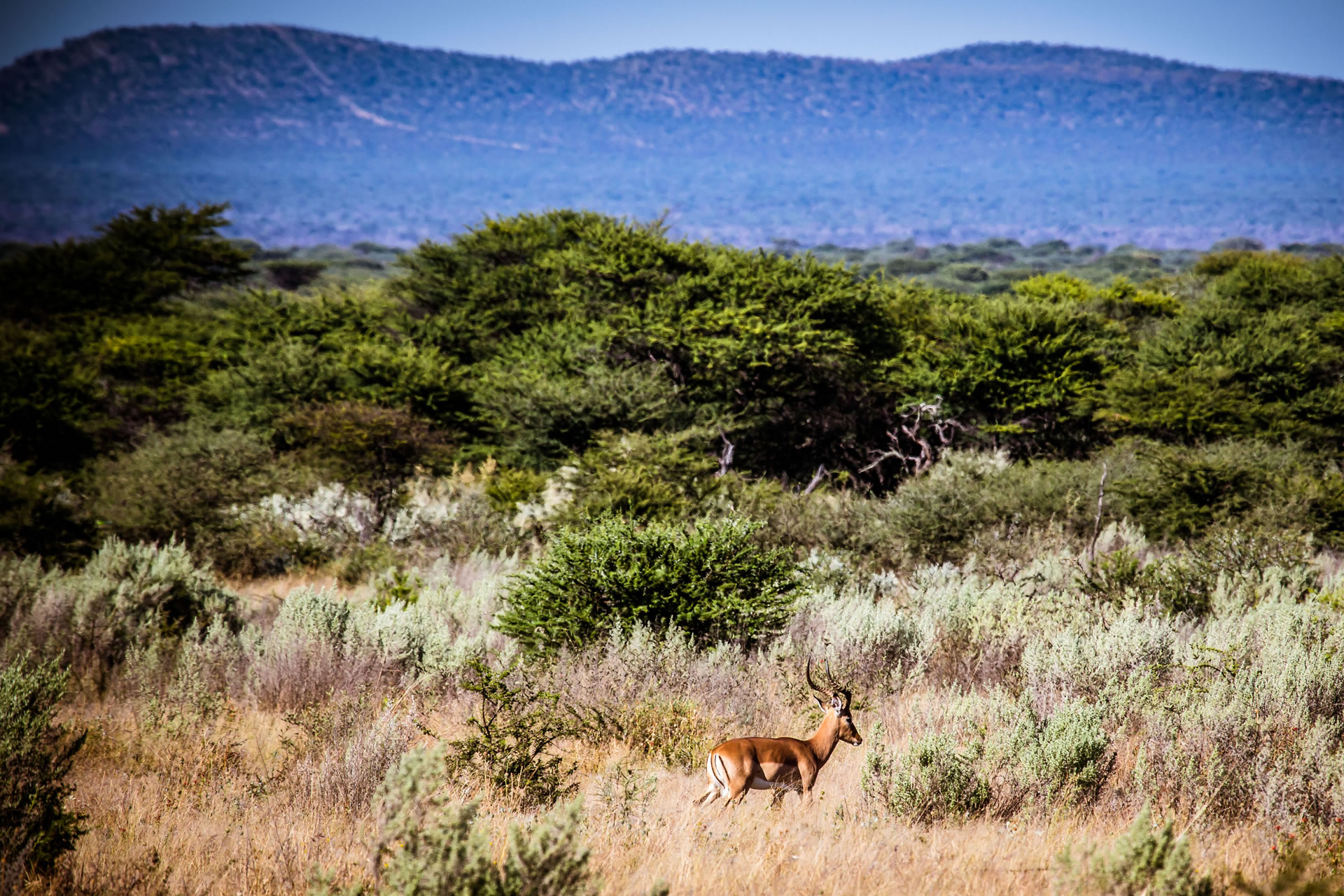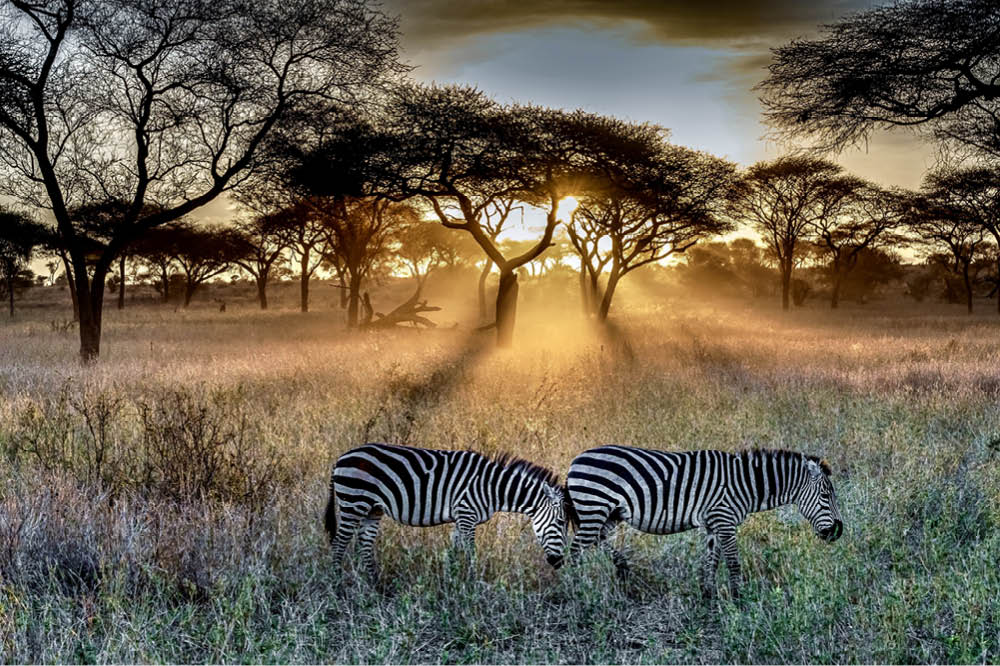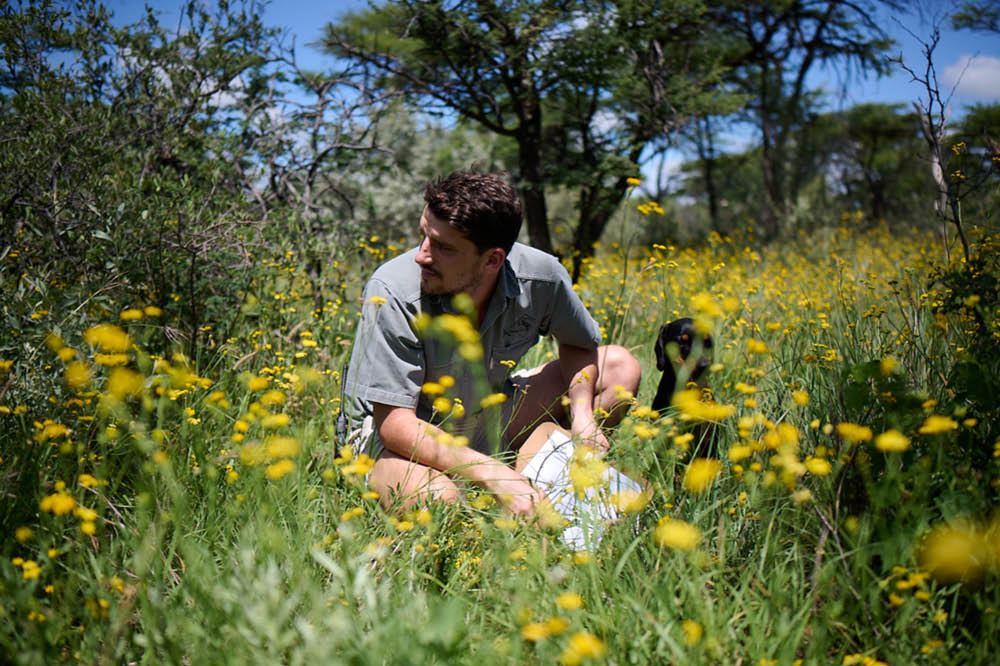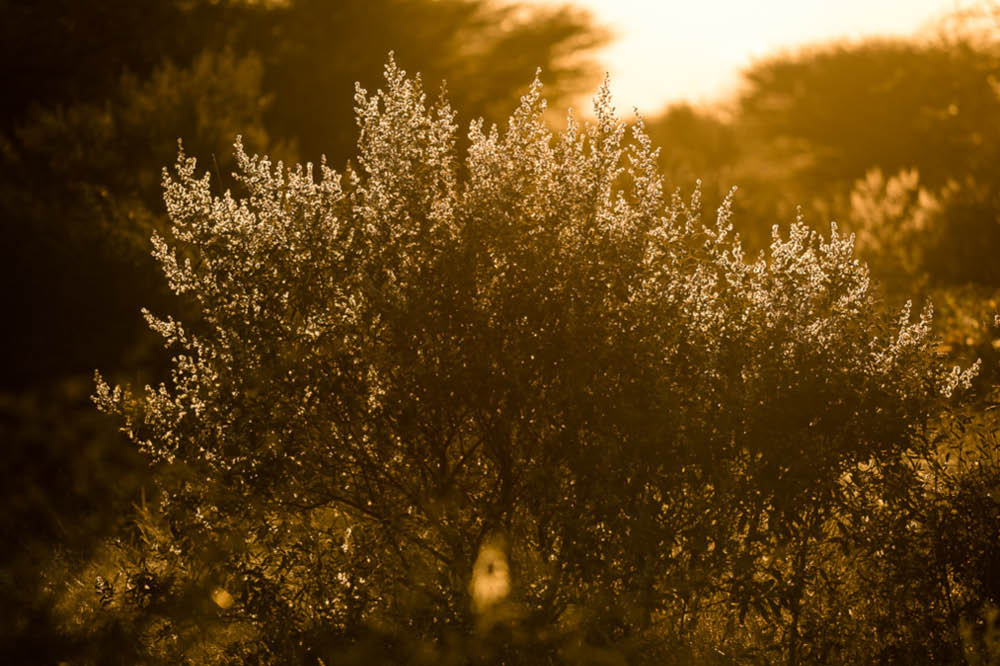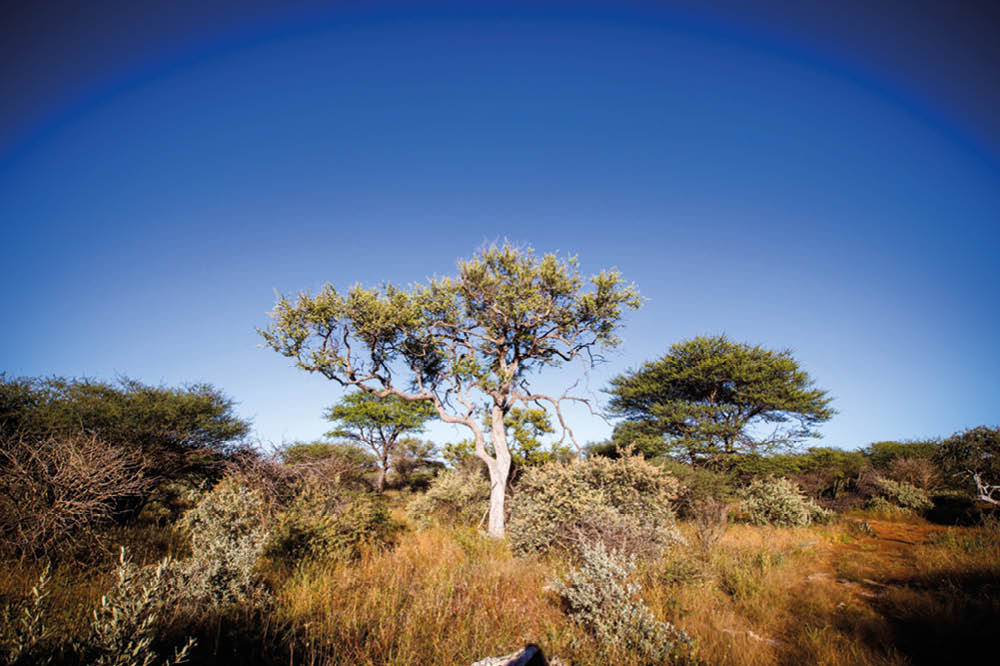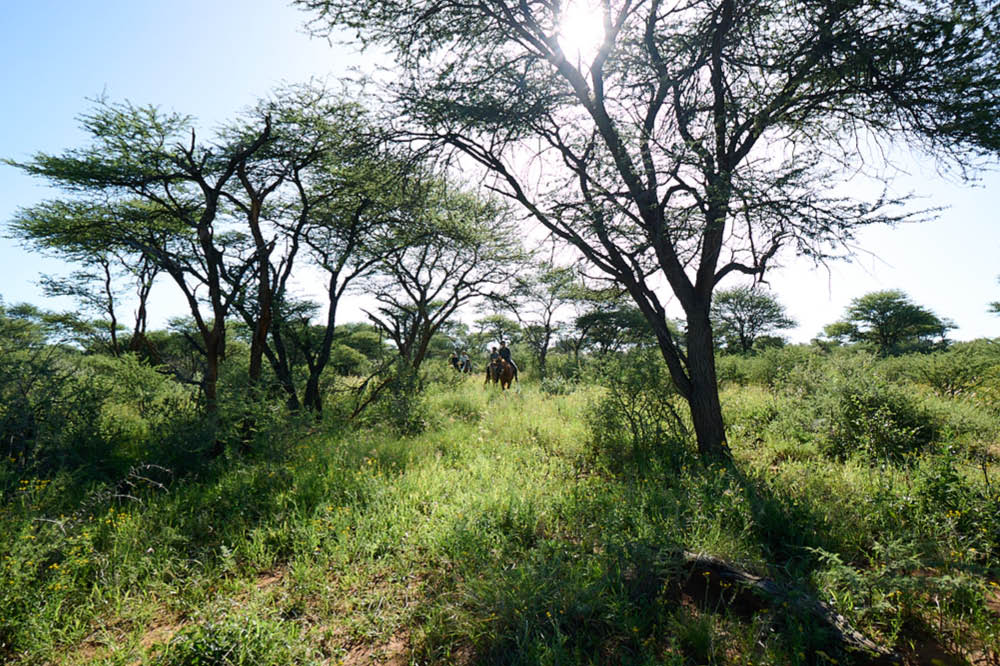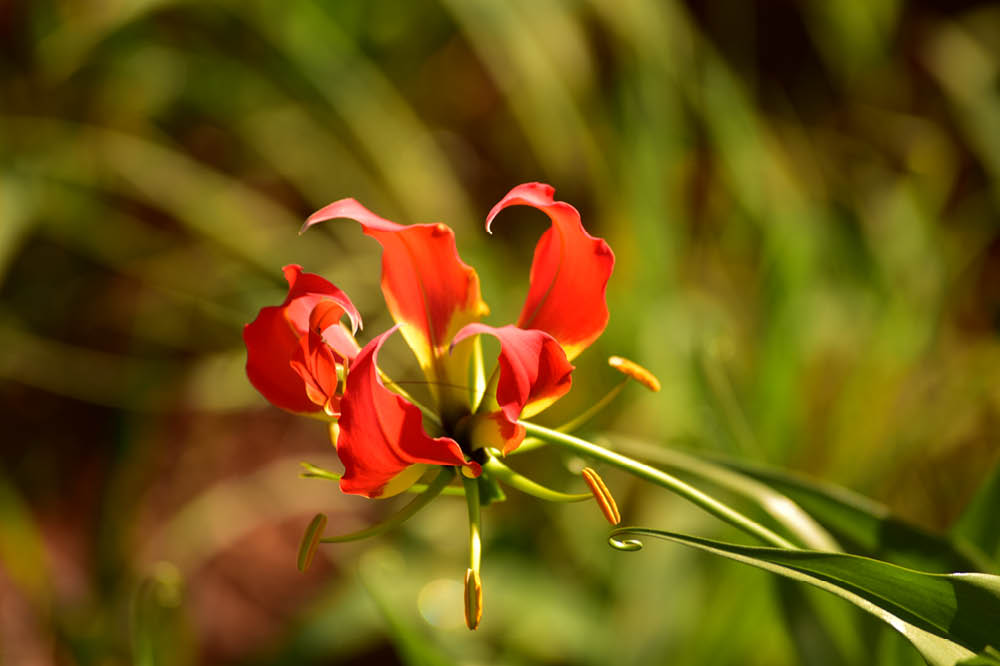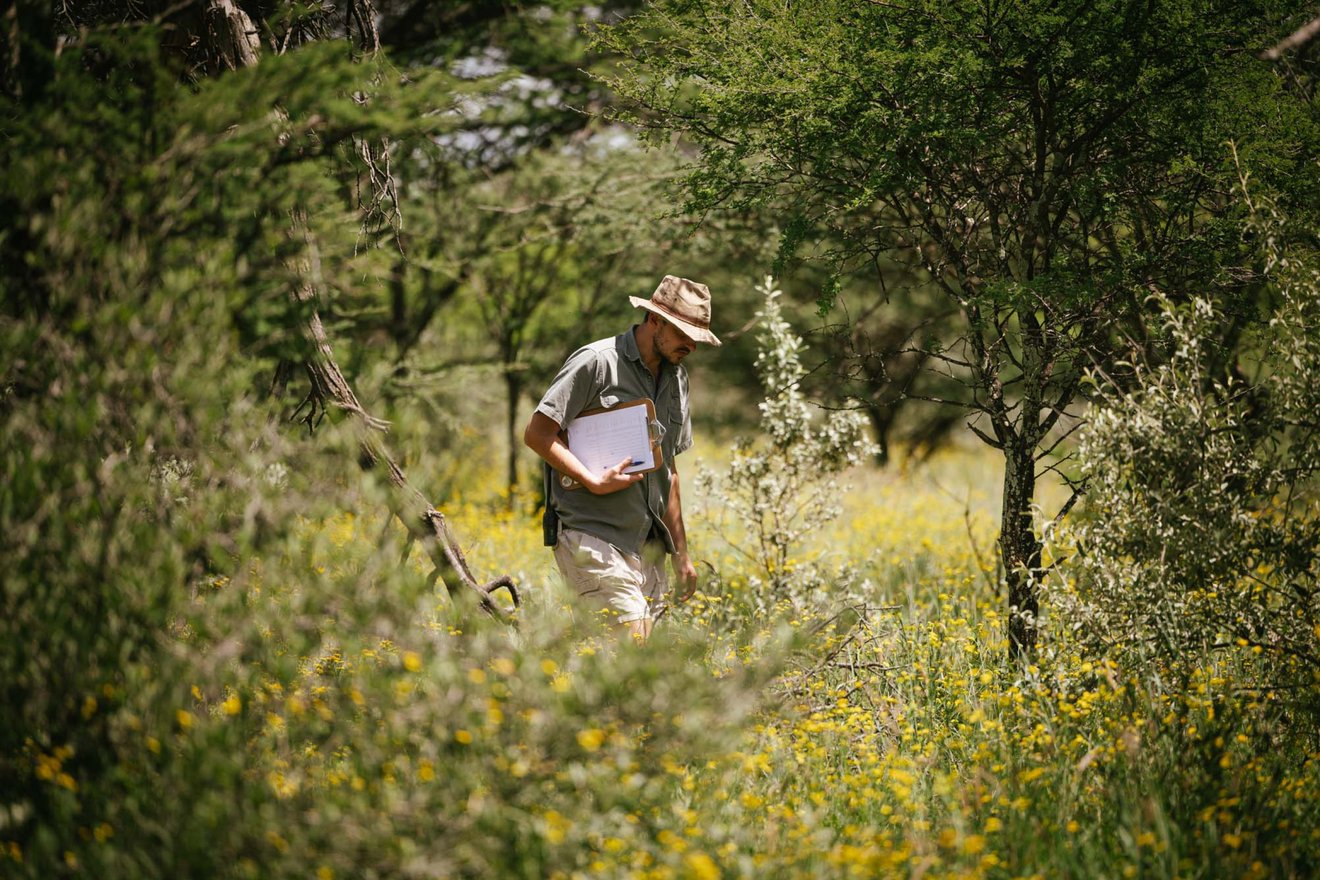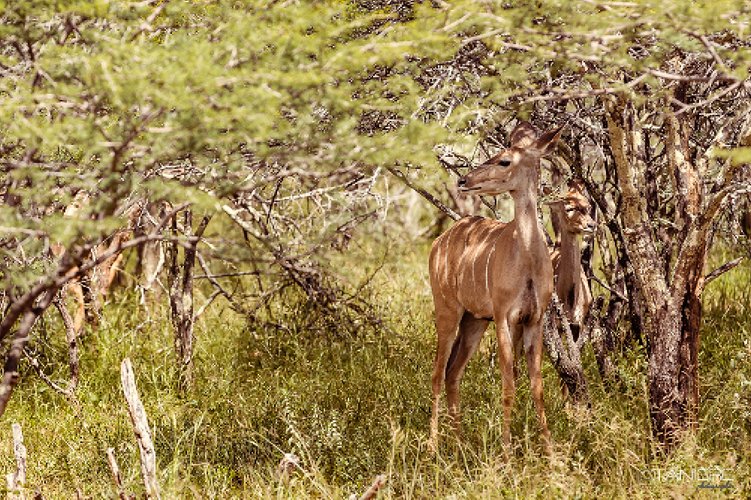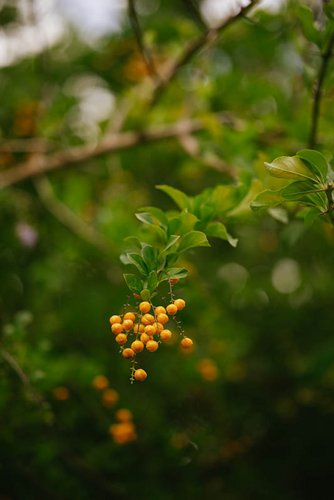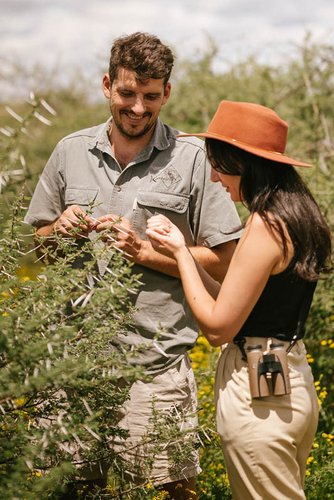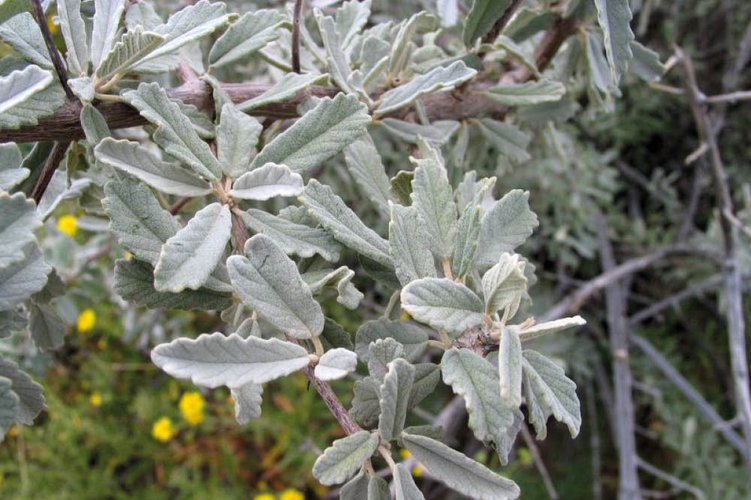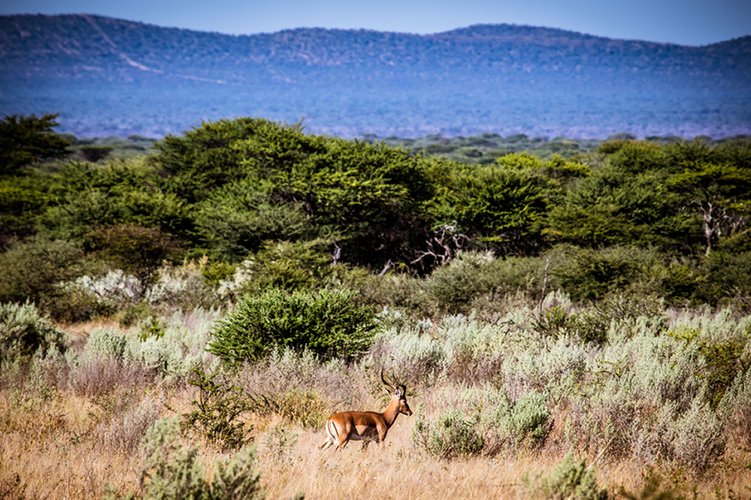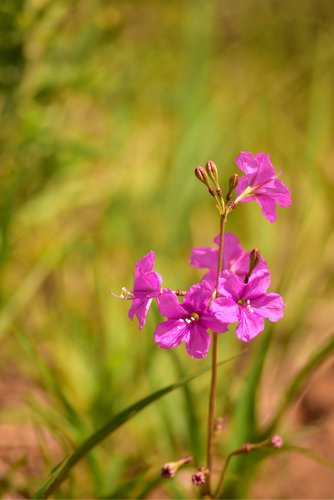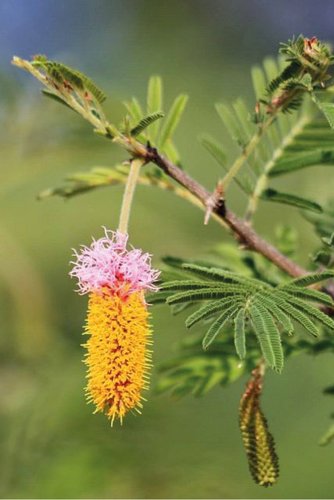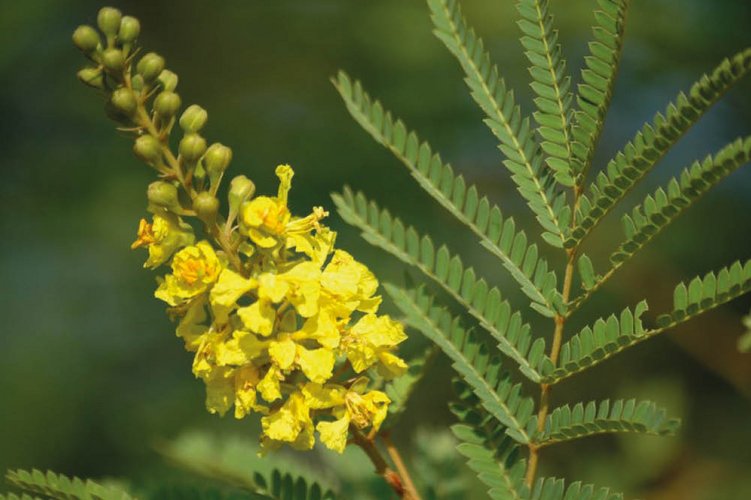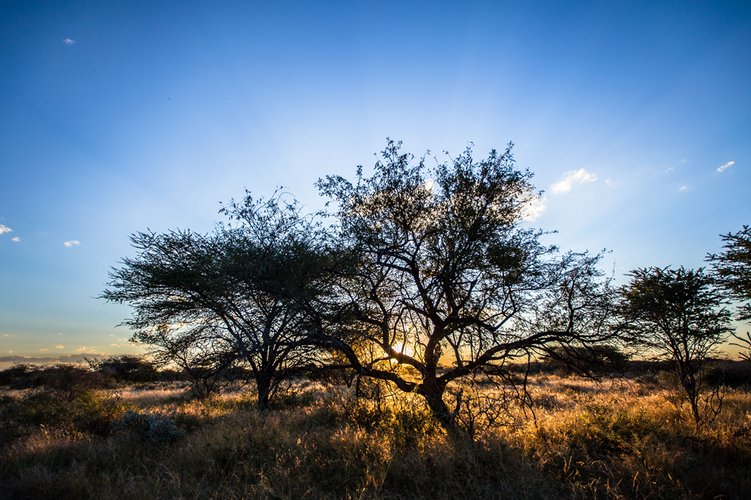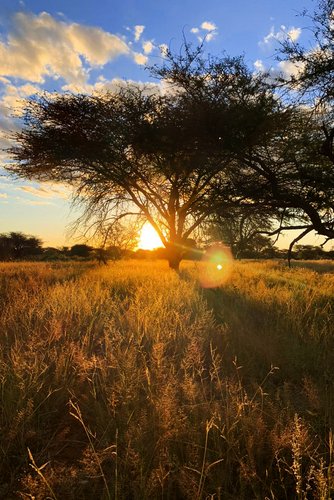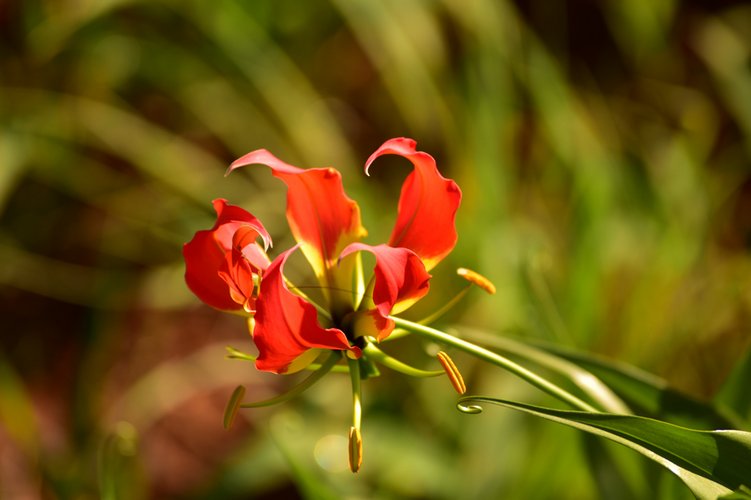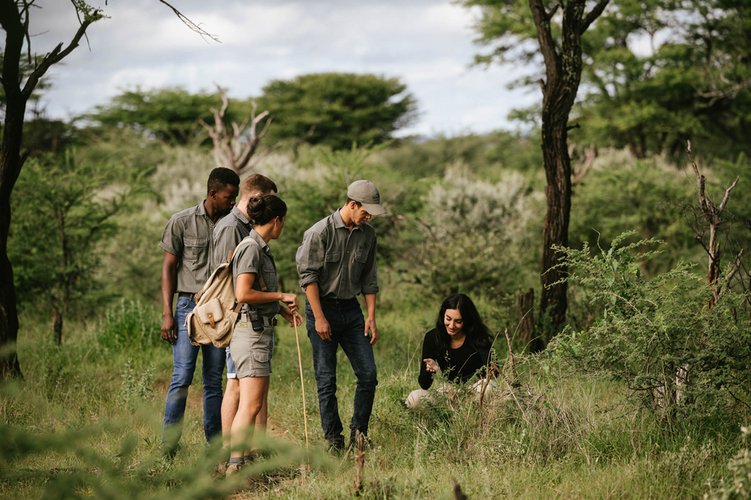KAMBAKU's vegetation consists of herbs, shrubs and trees – bush savannah, we call it. Many plants have thorns to protect them from being overgrazed. Long-stalked savannah grass covers the stony ground in open areas. It smells of camphor and lavender – and sometimes a little of petrichor, that marvellous scent of rain on dry land...
Diversity
SAVANNAH LAND
Namibia's unique diversity is also evident within the savannah. Africa has three types of savannas, which differ from each other depending on different annual rainfall and vegetation. At KAMBAKU you will experience the driest type, the natural thorn bush savannah. The vegetation of the thornbush savannah is characterized by tall grasses and various thornbushes, interspersed with trees as well as herbaceous plants and succulents.
WINTER IN THE SAVANNAH
In May, the dry winter season begins in Namibia and the daytime temperatures cool down to between 20 and 25 degrees Celsius. The nights can get cold with temperatures reaching only single digits. Gloves, scarves and warm caps (beanies) are therefore recommended, especially for early-morning outings.
When there is no rainfall, the natural water sources in the bush dry up and the landscape turns typically golden yellow. It is the time when many animals can be observed, especially at water holes.
In the dry season, small brush fires can be caused intentionally or by carelessness. Most are deleted immediately by the staff. Some sources of fire that are easy to control are deliberately left to burn for a while. They are important to the ecosystem. Burning off the deadwood creates light and space for nutritious savannah grass. In addition, important nutrients are supplied to the soil via the ash, which seedlings need for vigorous growth.
KAMBAKU is the work of many hands that offer travellers (and nature) a small paradise on earth. You deserve our greatest thanks!


